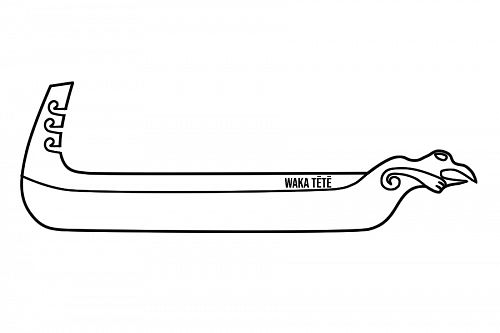
Narrative for Waka 2019
Somerfield Waka Metaphors
Waka Mōkihi- A waka mōkihi is a woven raft made from raupo reeds and harakeke. While not the most ornate or long lasting, they are practical, useful and can be made quickly with easily accessible materials to get a job or task done. For us at Somerfield Te Kura Wairepo, a waka mōkihi symbolises coming together, working as a team to achieve our goals and taking the first steps towards increased responsibility and independence. When a waka mōkihi was needed a whānau would come together to construct it. Everyone would work together as a team, while at the same time having the method of construction past down from parent to child, from tuakana to teina. In our Waka Mōkihi team we aim to do the same; coming together as one, working as a team, learning from our parents, teachers and one another so that we can cast off onto our awa and begin our new voyage of new learning at Somerfield Te Kura Wairepo.
Waka Kōpapa -A waka kōpapa is a wooden canoe cut out of a single tree trunk. Their thin short hull made them maneuverable and fast, and their increased capacity and reliability made them the most common waka to be constructed. They were regularly used for transporting people and belongings up or down rivers, or across harbours. For us at Somerfield Te Kura Wairepo, a waka kōpapa symbolises increased resilience and independence. The waka is quick on the water - many new skills have now been mastered and our students’ learning is accelerating into deeper waters. The waka is more sturdy - foundations of resilience have been laid and students are becoming more capable of riding the waves and rapids. The waka is maneuverable - students are taking onboard increasing responsibility for driving their learning.
Waka Tētē-A waka tētē is a wooden canoe carved from a single or joined together logs. It’s main parts are a hull, gunwales, thwarts, a bow piece and a stern post. The bow piece took the form of a face with a protruding tongue, described as a tētē, where this waka gets its name. The waka tētē was used to transport goods, kai and people up and down many of Aotearoa’s coastal waterways as it was stable in rougher seas and could carry a heavier load. Waka tētē were paddled by a team of people, where unity and discipline were needed to hold the course. For us at Somerfield Te Kura Wairepo, a waka tētē symbolises increasing collaboration and leadership, reliability and mana. A waka tētē can not be paddled alone; each member of the team must work together effectively in order to succeed. Some will take the lead while others will follow but we must all work as one to keep moving forward. A waka tētē is stable in a choppy sea; we need to be able to weather the ups and downs, learn from our mistakes and continue on our education journey out to sea with grit and determination. A waka tētē has mana; we are the tuakana of our school, we must lead by example in everything we do and show the way for our teina.
Gallery



